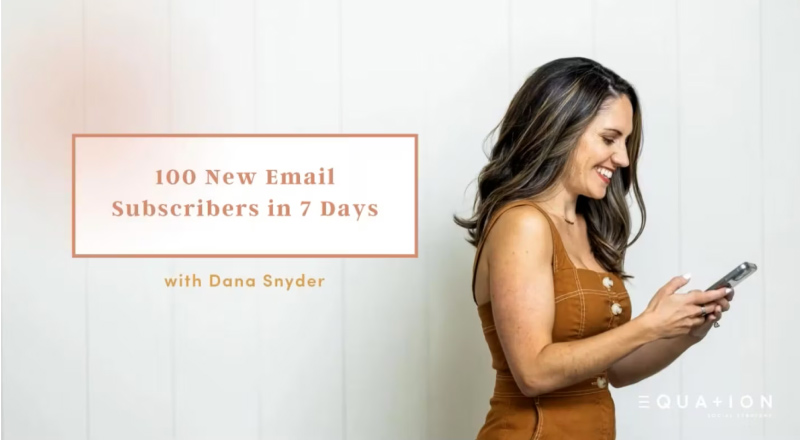For one reason or another, many nonprofits don’t feel comfortable using Facebook to find new donors. They just don’t think social media ads will work for their mission.
You’ve probably heard these words before, or even said them yourself:
- My follower size is too small.
- I’m too local/regional.
- I don’t have a big enough budget.
- I’ve never run ads before.
Nonprofit marketing maven Dana Snyder is here to help you debunk these statements – which leads us to our first tip:
Don’t get clouded with self-doubt
As the founder of Positive Equation and the host of Missions to Movements, Snyder has helped numerous organizations leverage social media – specifically nonprofit Facebook ads – to transform their online presence and acquire new donors.
Her three-step lead generation strategy has gained her nonprofit clients hundreds of new email subscribers in one week. One organization acquired 404 new names at just 98 cents per lead by sharing a seasonal recipe with their social media following!
She recently shared her strategy in a DonorPerfect webcast, 100 New Email Subscribers in 7 Days: How to Grow Your Email List with Social Media Ads, so we’re recapping it for you!
You can also watch the full session on our Expert Webcasts page >>
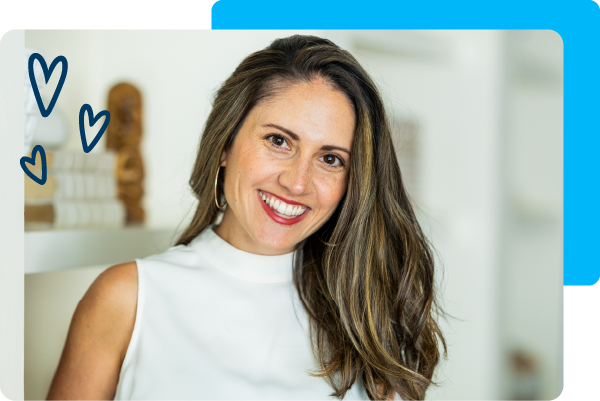
Try new methods, but keep the old
Before we get started, by no means is Snyder suggesting that you abandon your current donor acquisition strategy. She says the problem isn’t with your existing methods, it’s that their results can be sporadic or stagnant.
Social media ads are meant to boost the strategy you’ve already built and work in tandem with your other targeted efforts, such as:
- Events
- Web pages
- Signup forms
- Pop-up forms
- Newsletters
- Crowdfunding
- QR codes
Want to start slow before spending?
You can hone your marketing strategy by applying the following tips to your organic social media posts as well.
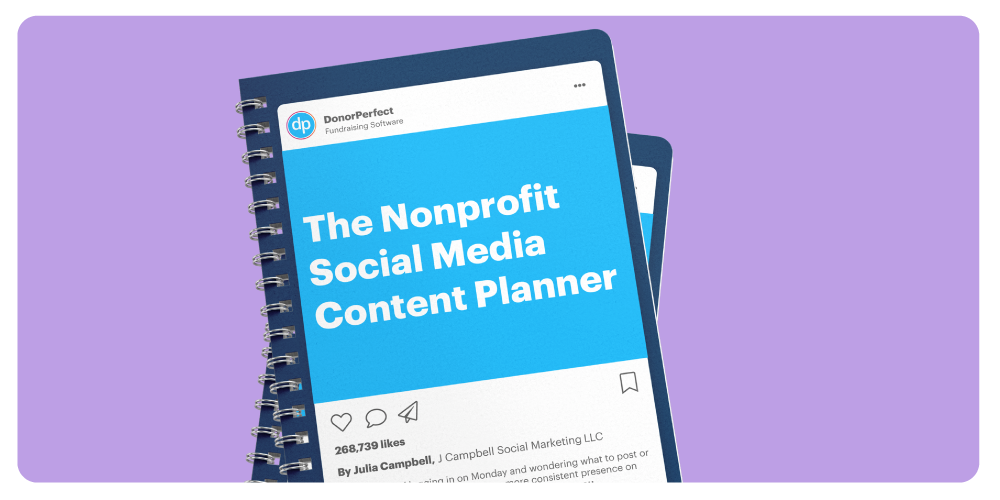
Use your system to justify spending
Consider the revenue your new donors will eventually bring in. Even if you don’t have much to spend on social media ads, it might make sense to spare a few cents per new donor acquired. You can actually generate hundreds of leads – in just a few days – for less than a dollar per lead. Just think, if your new leads were encouraged to donate monthly, you would easily recoup what you spent acquiring them.
Need help finding these figures?
Your fundraising system can help you determine your average acquisition cost per donor and compare it with your average donor lifetime value.
DonorPerfect allows you to create custom, scheduled reports that you can automatically share with your board or stakeholders at set intervals.
Watch and learn >>
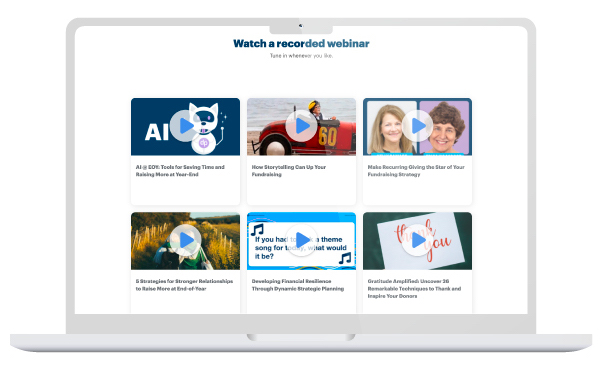
Dana Snyder’s three-step strategy:
1) Set up your Facebook for success
When running a lead generation campaign, your goal is to generate email leads, so the “Leads” objective and “Instant Forms” placement should be selected in Facebook Ads Manager. Instant Forms keep people on Facebook to fill out the form to download your free resource, ultimately lowering your costs per lead.
Snyder also recommends another tool called Zapier that can be connected to your Facebook account (and nonprofit tools like Constant Contact) to automate adding new leads to your email list instead of uploading them manually.
Ads getting rejected? If your ads are getting rejected by Meta, it could be because they are related to political messaging – especially if it’s an election year. You can go through a couple of extra steps to be marked as a special ad category, and then you will be able to run your ads, even if your mission has political ties.
2) Choose or create a lead magnet
Snyder specializes in helping fundraisers create simple, yet effective Facebook ads that provide free resources in exchange for their email addresses. For example, a soup kitchen might share a recipe, cookbook, or list of local shelters. These free resources are so effective in piquing the interest of potential supporters that they are often called “lead magnets.”
When creating an effective lead magnet, Snyder recommended making it timely, relevant, and high value to the target audience. Think about what new supporters should know about your mission before getting involved or what they might be surprised to find out. What solutions can you offer to their problems? How can you spread awareness together?
Lead magnet examples:
- A collection of authentic recipes
- A list of local opportunities
- Things you wish you knew sooner
If you already have this kind of content on your website – like a helpful blog article or guide – you can repurpose it into a lead magnet. And if you don’t, no worries – you have plenty of stories to tell about your mission, you just need to get them “on paper”!
3) Discover what makes a good ad
When creating your Facebook ad, you will have the option to accompany it with a graphic or video. So, think about who you want to take action, and attract them with these tips:
- Spark feelings about your shared values.
- Write a hook to get the reader to stop scrolling.
- Consider keywords that they may be looking for, specifically.
- Give your solution to the problem, with actionable steps.
- Write in “hope-based staccato” as Snyder calls it.
Ad copy
With her clients, Snyder saw that the best-performing ads are easy to read, with big text, short hooks, and limited visuals. Try to avoid long sentences, “walls of text,” and busy images that distract from your ad copy. Many of her clients saw more success with ads that were text-only (compared to text with a visual).
Ad testing
Ad testing allows nonprofits to learn what resonates best with their ideal donors, and then replicate their highest-performing ads for greater success. Snyder’s clients often run two ads concurrently to test out two different ideas (like one design vs. another, or one lead magnet vs. another), seeing which one results in more leads after 1-2 weeks. One client duplicated a top-performing ad to acquire 800 additional emails!
Ad graphics
There’s no need for a graphic design degree or expensive tools. Snyder’s research shows that detailed imagery is often scrolled past, so it’s best to stick to the basics! Many fundraisers use Canva to create their ads, a free tool that allows you to make a custom graphic in seconds. You can even import your nonprofit logo and lean on their catalog of free graphics and stock images to accompany your text.
Need to brush up on design basics? Our free guide can help you create stronger graphics!
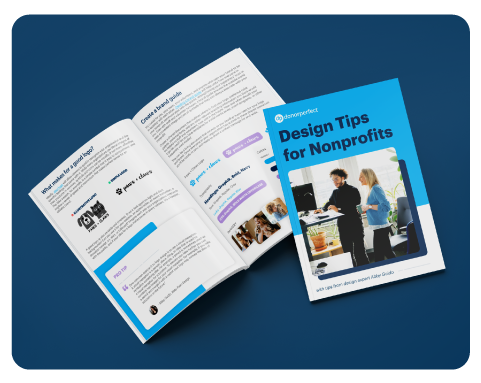
A growing email list allows nonprofits to connect with more donors and supporters over time. By leveraging this proven framework, nonprofits can rapidly grow their email lists with targeted Facebook ads. For more help sustaining the advancement you work so hard to achieve at your nonprofit, check out our Guided Growth Plan, a compilation of free resources and strategies to help your organization reach its goals.







